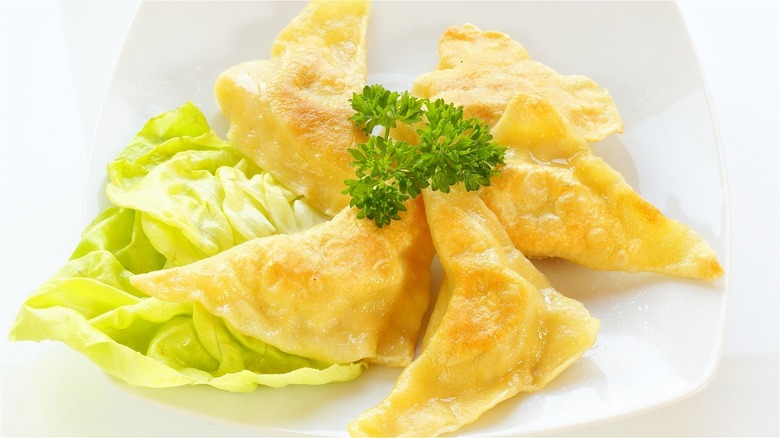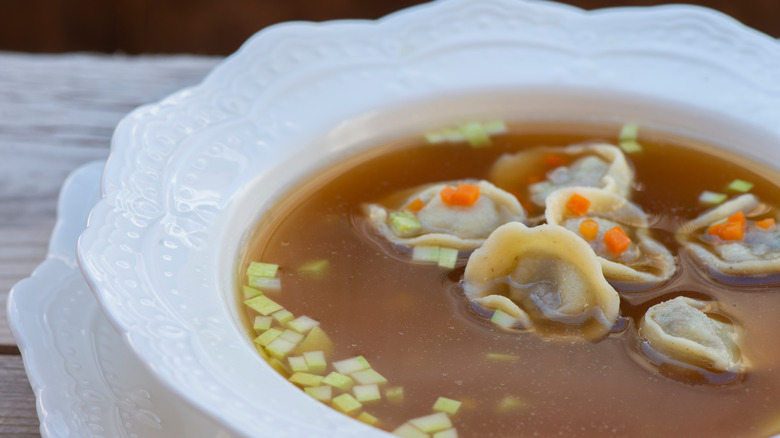Why People Eat Kreplach For Purim
Purim is a Jewish holiday that celebrates, in the abstract, the triumph of good over evil, of integrity over honesty, and of loyalty over opportunism. On a more granular level, it celebrates how in Ancient Persia, Queen Esther used all of those qualities to thwart a conspiracy to murder the Jewish population, per My Jewish Learning. It's not only an auspicious holiday but also a fun one to celebrate with a combination of interactive storytelling, and a festive dinner that traditionally includes plant proteins such as beans and seeds. The platters of falafel and poppy-seed-and-honey-filled hamantaschen cookies are enough to get mouths watering.
But wait. You might wonder where kreplach fits in as you feast your eyes on those triangularly-shaped crispy golden meat-and-veggie-filled dumplings. The dish does not generally emphasize plant protein but still has an important place on the Purim dinner table. The delicious dumpling lends itself to multiple variations depending on personal preference, as it may be filled with any mixture of meat and veggies and can be served either fried or boiled in soups. It is also rich in symbolism related to Purim.
Kreplach has an important lesson to teach
Kreplach, which can be made with a simple ingredient swap, appears on Jewish tables in connection with three holidays. One is on Purim; the other two are on Yom Kippur and the last day of Sukkot, per Chabad. What they all have in common (besides kreplach) is the theme of judgement versus mercy. On Yom Kippur, observant Jews make amends to those they wronged in the hopes that God will show mercy when sealing their fate, which is believed to occur on the last day of Sukkot. On Purim, observant Jews tell, celebrate, and retell the story of how good triumphed over evil in Ancient Persia — evil being personified by a villainous character named Haman (via My Jewish Learning).
As the story goes, Haman was the Ancient Persian king's Prime Minister, but his demonstrated lack of loyalty and integrity led to his demise. The queen and her guardian, who demonstrated nothing but selfless devotion to the king, helped bring him down. Kreplach, which at its essence is simply meat inside of dough, reminds us that things are not always what they appear to be on the outside and we will be rewarded for delving beneath the surface. Meat also represents death to an animal but sustenance to humans, while the dough represents kindness and harmless sustenance (via Chabad). For all of these reasons, eating kreplach on Purim is considered not just a treat but a genuine mitzvah.

